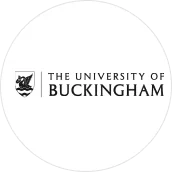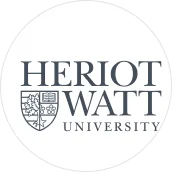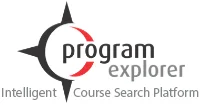• Study Abroad Guidance
What is the difference between CV and Resume?
2854 Reads
3 min Read
- An employer spends only 5 to 7 seconds assessing a resume and deciding whether to call for an interview.
- Using professional font and keywords and mentioning relevant information can make a resume/CV ATS-friendly and go through the interviewer.
- Major differences between a CV and a resume are length, purpose served, content, and structure.
What is a resume?
Ideal Format for a resume
| Chronological | It is ideal for applicants with at least one year of consistent work experience. |
| Functional | This format is useful for candidates who have lengthy careers and diverse work experience with some gaps within. |
| Combination | These formats could be combined to enlist more than 10 years of experience, where candidates could showcase their skills and job history. |
Points to be included in the resume:
- Full Name
- Job Title/Name of the Position
- Contact Information
- Objective
- Work Experience
- Education"
- Relevant Skills
- Languages and Proficiency
- Accomplishments and Interests
What is a CV or Curriculum Vitae?
CVs usually don't have any PDF upload limit, so the more accomplishments or experiences there are, the more pages could be added to them. Recruiters can better understand one's job history and skill development in a descriptive kind of CV. As there are no length restrictions for a CV, it could range from three to ten pages or more if required. An engaging CV is important to assist prospective employers as a CV is a bit like an autobiography to tell one's story in an interesting and relevant manner.
Ideal Format of CV (Curriculum Vitae)
Points to be included in a CV or Curriculum vitae
- Full Name
- Contact Information
- Title and Objective
- Research interests
- Education
- Publications
- Teaching Experience
- Work Experience
- Conferences and Courses
- Skills
- Certificates
- Languages
- Grants/Fellowships
- References
Key Differences Between CV and Resume
Regarding Academic and Professional Experience
A major difference between a CV and a resume is the purpose they both fulfil. The resume just mentions professional experience in an elaborative manner and according to the requirements of the job application. It could be utilised to apply for jobs in both the public and private sectors. The curriculum vitae highlights the academic and work history of both academic and research positions. CVs are usually sent to apply for higher education, research, or teaching jobs. Hence, a CV is one of the documents required to study abroad, while a resume helps to apply for jobs.
Length of the document
Length is a major difference between a resume and a CV, as a CV is typically much longer than a resume. CV could also include publications, grants, research, awards, and teaching experience. A resume is limited to one to two pages long and mainly includes skills and experiences only.
Geographical Significance
In India, South Africa, and Australia, resumes and curriculum vitae are often interchangeable and could be utilised in each other's place as far as they serve the purpose. For jobs in the US, these two are different styles of documents used for applications. In the UK, New Zealand, and parts of Europe, an employer may refer to both a resume and a CV as separate documents at the same time.
Ability to Customize
What is Biodata?
Ideal Format for a biodata
Points to be included in a biodata:
- Objective
- Personal Details
- Work Experience
- Skills
- Education
Difference Between CV, Resume, and Biodata
| Particulars | CV | Resume | Biodata |
| Purpose | Academic Application | Job Application | Marriage and Job Application |
| Length | No limit | 1 or max 2 pages | Max. 1 page |
| Section Listing | Reverse Chronological | Reverse Chronological | Chronological |
| Details | Complete detailed info | Only relevant info | Simple format |
| Content | Main focus on experience, education, and skills | Main focus on experience, education, and skills | Personal information |
Tips for Writing a Strong Resume or CV
| Use keywords | Companies use an ATS (application tracking system) to filter irrelevant resumes. To ensure the resume passes through ATS, an applicant must use the specific keywords in his/her resume, as mentioned in the job description. |
| Use professional font | A professional font shows that the applicant is serious about the job. Use a font like Times New Roman or Arial and font size 10-12. This makes the resume easy to read. One can also use Canva and other resume makers to find the best fonts. |
| Relevant information | One page is not enough to mention everything about a person. So, writing only relevant and useful information such as academic history, professional experience, and long-term goals is best. Avoid writing about age, marital status, and religion. Also, the length of the document can change the format as it’s a key difference between a CV and a resume. |
| Use Active language | Read this. "I successfully delivered 15 ranking blogs in TCS in the past 2 years". Then there is this: "15 ranking blogs were delivered by me in TCS in the last 2 years". Which sentence is better? First one, right? That's because it's written in an active voice. Active language has a stronger impact on an employer than passive language. So try to use powerful words like accomplished, achieved, earned, and completed. |
| Proofread | Last but not the least. No one can forget this. A last read is a must to make sure the resume doesn't have any kinds of errors in terms of grammar, punctuation, format, and more. |
Conclusion
To sum up it all, a CV is more in-depth and lengthy than a resume because it gives a more thorough summary of a candidate's career. A resume provides a brief overview of a candidate's professional history and skills relevant to the potential employer. CVs are commonly used in the UK, Australia, and New Zealand and are less common in the U.S. unless a candidate is applying for medical, science, law, or academic jobs. Lastly, a resume serves as one of the documents required to study abroad, while a CV is used to apply for jobs. These were some common differences between a CV and a resume. Contact our study abroad experts or information about overseas jobs.
FAQ
Get great articles direct to your inbox
The latest news, articles, and resources, sent straight to your inbox every month.
Popular Universities to Study Abroad
World class education waiting for you.
-at-University-of-Portsmouth.png)
Navitas Group - International College Portsmouth (ICP) at University of Portsmouth
England, UK • 178 Programmes
Tuition Fee : GBP 4000-14500 / year
.webp)
Conestoga College - Milton - Steeles Avenue Campus
Ontario, Canada • 9 Programmes
Tuition Fee : CAD 14000-14500 / year

University of South Wales - Cardiff Campus
Wales, UK • 42 Programmes
Tuition Fee : GBP 13000-14000 / year

Global University Systems (GUS) - Berlin School of Business and Innovation - Berlin Campus
Berlin, Germany • 27 Programmes
Tuition Fee : EUR 9450-9925 / year

Central Queensland University - Mackay, Ooralea Campus
Queensland, Australia • 7 Programmes
Tuition Fee : AUD 16000-32000 / year


Heriot-Watt University - Scottish Borders Campus
Scotland, UK • 12 Programmes
Tuition Fee : GBP 15000-21000 / year

International School of Management - Stuttgart Campus
Baden-Wurttemberg, Germany • 4 Programmes
Tuition Fee : EUR 11400-11400 / year
Popular English Language Proficiency Exams
Blogs and Articles
Curated content to keep you updated on the latest education trends, news and more.
ACT vs. SAT: Which One to Choose?
Updated on • Apr 12,2025 05:40 PM IST • Study Abroad
Updated on • Apr 11,2025 05:53 PM IST • IELTS
Backlog Certificate: A Complete Guide
Updated on • Apr 11,2025 01:47 PM IST • Study Abroad Guidance
PTE Score Chart 2025: PTE Exam Scoring System & Calculation
Updated on • Apr 09,2025 05:37 PM IST • PTE
Master's in Computer Science in the USA
Updated on • Apr 08,2025 05:59 PM IST • USA
Top Trending MBA Specialisations in 2025
Updated on • Apr 08,2025 04:47 PM IST • Study Abroad
Describe Your Hometown IELTS Speaking Part 1 Topic
Updated on • Apr 07,2025 05:50 PM IST • IELTS
How to Get a Job in USA in 2025
Updated on • Apr 07,2025 03:19 PM IST • USA
Highest Paying Jobs in the World
Updated on • Apr 01,2025 05:31 PM IST • Study Abroad
Student Life in Ireland in 2025
Updated on • Mar 29,2025 05:50 PM IST • Ireland
Top Public Universities in Germany
Updated on • Mar 26,2025 04:33 PM IST • Germany
Top Universities for Masters in Ireland in 2025
Updated on • Mar 25,2025 04:36 PM IST • Ireland
Cost of Living in Singapore for Indian Students in 2025
Updated on • Mar 22,2025 11:57 AM IST • Singapore
PTE vs IELTS : Know the Difference and Which is Easier?
Updated on • Mar 21,2025 03:38 PM IST • IELTS
Updated on • Mar 20,2025 10:19 AM IST • Germany
Updated on • Mar 12,2025 11:20 AM IST • Ireland
Updated on • Mar 11,2025 01:18 PM IST • USA
Best Countries to Study Abroad for Indian Students in 2025
Updated on • Mar 08,2025 01:24 PM IST • Study Abroad
Updated on • Mar 05,2025 12:19 PM IST • UK
Fastest Growing Job Sectors in Germany in 2025
Updated on • Feb 28,2025 04:04 PM IST • Germany
Related Blogs and Articles
A little effort to provide an authentic and reliable content for keen readers!!
Backlog Certificate: A Complete Guide
Updated on • 11-04-2025 • Study Abroad Guidance
What if Your Visa Gets Rejected?
Updated on • 27-02-2025 • Study Abroad Guidance
Study Abroad: Physiotherapy Guide
Updated on • 25-10-2024 • Study Abroad Guidance
Updated on • 19-10-2024 • Study Abroad Guidance
Best Cities to Study in Switzerland
Updated on • 29-08-2024 • Study Abroad Guidance
Entrance exams to study in Canada
Updated on • 04-06-2024 • Study Abroad Guidance
How to Make the Most of Your Study in Canada Experience
Updated on • 25-01-2024 • Study Abroad Guidance
How to Make Friends When Studying Abroad
Updated on • 15-09-2023 • Study Abroad Guidance
How is Artificial Intelligence Revolutionising Global Education?
Updated on • 14-09-2023 • Study Abroad Guidance
Health Tips for Students Studying Abroad
Updated on • 12-09-2023 • Study Abroad Guidance
13 Steps for Students Aspiring To Study Abroad
Updated on • 12-09-2023 • Study Abroad Guidance
Things to Do and Student lifestyle in Canada
Updated on • 11-09-2023 • Study Abroad Guidance
Education Agents -Work ethics, Trust and Obligations
Updated on • 04-09-2023 • Study Abroad Guidance
How to Write a Scholarship Essay?
Updated on • 21-08-2023 • Study Abroad Guidance
Resume format for Freshers: Tips, Types, and How to choose
Updated on • 17-08-2023 • Study Abroad Guidance
Top Cities to Study in Germany
Updated on • 07-08-2023 • Study Abroad Guidance
Top 10 careers after Studying in USA
Updated on • 07-08-2023 • Study Abroad Guidance
Role & Importance of an Overseas Education Consultant
Updated on • 24-07-2023 • Study Abroad Guidance
How Studying Abroad Can Change You in Your Twenties
Updated on • 19-07-2023 • Study Abroad Guidance
Updated on • 12-05-2023 • Study Abroad Guidance











